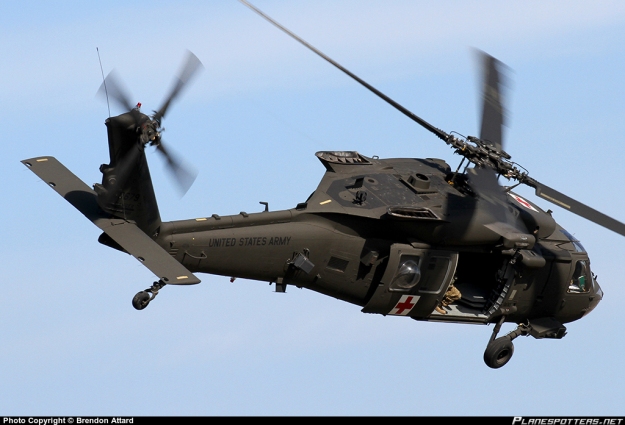Comprehending the Mechanics and Engineering Behind Uh 60 Helicopters
The UH-60 helicopter, frequently understood as the Black Hawk, stands as a pinnacle of contemporary rotorcraft innovation, symbolizing a mix of durable engineering and intricate mechanics. As we peel back the layers of the UH-60's design, a globe of intricate systems and meticulous engineering comes to light.
History of UH-60 Helicopters
The background of UH-60 helicopters traces back to the late 1970s when the USA Army looked for a flexible and sophisticated energy helicopter to replace its aging fleet. In action to this requirement, the Sikorsky Aircraft Corporation created the UH-60 Black Hawk helicopter. Presented in 1979, the UH-60 rapidly ended up being a staple in military procedures because of its outstanding capabilities.
The UH-60 was made to succeed in a range of objectives, consisting of army transport, clinical emptying, electronic war, and special procedures. Its capability to adapt to different roles made it a valuable property to the U.S. uh 60. Military and other army forces all over the world
For many years, the UH-60 platform has actually undertaken several upgrades and variants to enhance its efficiency and keep speed with progressing mission needs. These helicopters have seen extensive solution in problems such as the Gulf Battle, Afghanistan, and Iraq, showcasing their reliability and adaptability in diverse operational settings. The UH-60's rich history is a testimony to its long-lasting tradition as a leading utility helicopter.

Engine and Power Systems
Utilizing cutting-edge propulsion technology, UH-60 helicopters are geared up with sophisticated engine and power systems to ensure optimal performance and reliability in a range of operational circumstances. The UH-60, generally referred to as the Black Hawk, is powered by 2 General Electric T700-GE-701D engines, each capable of delivering up to 1,940 shaft horse power. These turboshaft engines give the needed thrust for the helicopter to accomplish its goals properly, including troop transportation, medical evacuation, and fight support.

Blades System and The Rules Of Aerodynamics
Just how do the blades system and navigate to this website the rules of aerodynamics of UH-60 helicopters contribute to their functional effectiveness and flight capacities? The blades system of the UH-60 helicopter plays a critical function in supplying lift and propulsion.
Aerodynamics additionally play a crucial function in the efficiency of UH-60 helicopters. The structured fuselage and blades blade layout lower drag, enabling the helicopter to achieve greater speeds and much better gas efficiency. The wind resistant layout of the UH-60 additionally adds to its capability to run in diverse environmental problems, consisting of high altitudes and warm temperature levels.
Avionics and Trip Control Equipment

In its intricate sychronisation with the blades system and the rules of aerodynamics of UH-60 helicopters, the avionics and flight control systems form a critical network of technologies forming the airplane's operational capabilities. In the UH-60, these systems include digital display screens, interaction radios, GPS navigation, weather condition radar, and auto-pilot systems.
The trip control systems of the UH-60 are liable for translating the pilot's inputs into the suitable modifications to the blades system, making certain secure flight and maneuverability. These systems consist of hydraulic actuators, servos, and computers that collaborate to manage the primary and tail blades, along with various other trip control surface areas. By exactly taking care of the helicopter's trip characteristics, these systems make it possible for pilots to execute a vast array of objectives, from transportation and search-and-rescue to battle procedures, with accuracy and self-confidence.
Function and Applications in Aviation
Avionics systems in UH-60 helicopters encompass an array of electronic systems that help in navigation, interaction, surveillance, and controlling numerous aircraft functions. These systems consist of digital display screens, autopilot systems, communication radios, General practitioner navigation tools, and climate radar. In addition, these systems incorporate security attributes such as autopilot modes, surface awareness warning systems, and security augmentation systems to improve the total safety and operational abilities of the UH-60 helicopters in numerous objectives, consisting Go Here of troop her response transportation, clinical discharge, search and rescue, and aerial firefighting.
Conclusion
To conclude, the UH-60 helicopter is a versatile aircraft with an abundant history and progressed engineering. Its engine and power systems, blades system, aerodynamics, avionics, and trip control systems all work together to make it a trusted and effective device. The UH-60's duty and applications in aeronautics are vast, ranging from armed forces operations to look and save missions. Its continued development and use demonstrate its relevance in the field of air travel (uh 60).
In its intricate coordination with the blades system and aerodynamics of UH-60 helicopters, the avionics and trip control systems create an essential network of technologies shaping the airplane's operational abilities.The flight control systems of the UH-60 are responsible for converting the pilot's inputs right into the proper adjustments to the rotor system, guaranteeing stable trip and ability to move. Avionics systems in UH-60 helicopters include a range of digital systems that help in navigation, communication, surveillance, and regulating different aircraft features. Furthermore, these systems include safety and security functions such as autopilot settings, surface understanding advising systems, and stability augmentation systems to enhance the total safety and operational capacities of the UH-60 helicopters in different missions, consisting of troop transportation, clinical evacuation, search and rescue, and airborne firefighting.
Its engine and power systems, rotor system, aerodynamics, avionics, and trip control systems all function with each other to make it a reputable and efficient machine.